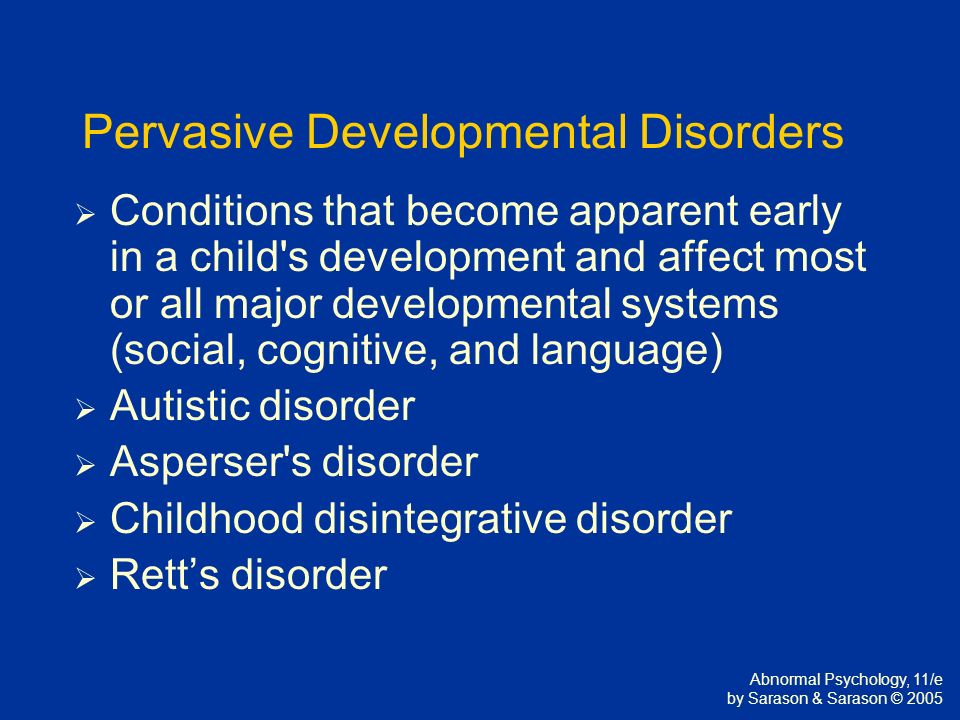
- Pervasive developmental disorders manual#
- Pervasive developmental disorders full#
- Pervasive developmental disorders trial#
Pervasive developmental disorders trial#

Subjects with an active seizure disorder (history of febrile seizures in early childhood will be considered.

A significant medical condition such as heart, liver, renal, or pulmonary disease, or a seizure disorder, as determined by history, physical examination, or laboratory testing.Comorbid disorder with possible association to autism (e.g., Fragile X Syndrome, Tuberous Sclerosis).DSM-IV-TR diagnosis other than PDD NOS (autistic disorder, Asperger's disorder, Rett's disorder, or childhood disintegrative disorder), schizophrenia, bipolar disorder or substance abuse within the last 6 months.Intelligence quotient (IQ) of equal to or greater than 50 based on the Wechsler Intelligence Scale for Children (WISC), 4th edition the Leiter International Test of Intelligence-Revised will be used if a child is nonverbal but thought to have an IQ greater than or equal to 50.Significant irritability as determined by a Clinical Global Impression Severity score of greater or equal to 4 (Moderately ill) and a score of equal to or greater than 18 on the Aberrant Behavior Checklist Irritability Subscale.Psychotropic medication-free for at least 2 days prior to screening laboratory tests and electrocardiogram (ECG).
Pervasive developmental disorders manual#
Pervasive developmental disorders full#
The full ABC is a 58-item parent rating with five factors: Irritability, Social Withdrawal, Stereotypy, Hyperactivity and Inappropriate Speech.


The Aberrant Behavior Checklist (ABC) is a symptom checklist for assessing problem behaviors in individuals ages 6 to 54 years-old with mental retardation. The primary objectives of this study are to determine whether aripiprazole is effective and well tolerated for irritability in children and adolescents with PDD not otherwise specified (NOS) during an 8-week acute phase and whether the effectiveness and tolerability of aripiprazole is maintained during a 16-week continuation phase. Thus there remains a need for a novel pharmacotherapy that would be safe and effective for children and adolescents with PDDs. However, the atypical antipsychotics have also been associated with adverse effects. After benefits of typical neuroleptics were reported in subjects with PDD, research shifted to the atypical antipsychotics which have been shown to be better tolerated and effective in this population. Research suggests that a dysregulation of the dopamine and serotonin systems contributes to these interfering behaviors in individuals with PDD. Pervasive developmental disorders (PDDs) are characterized by severe impairments in social interaction and communication in addition to restricted patterns of interests and activities.


 0 kommentar(er)
0 kommentar(er)
